Studio Binocle brings a 1930s Piero Portaluppi apartment to life for Massimo De Carlo
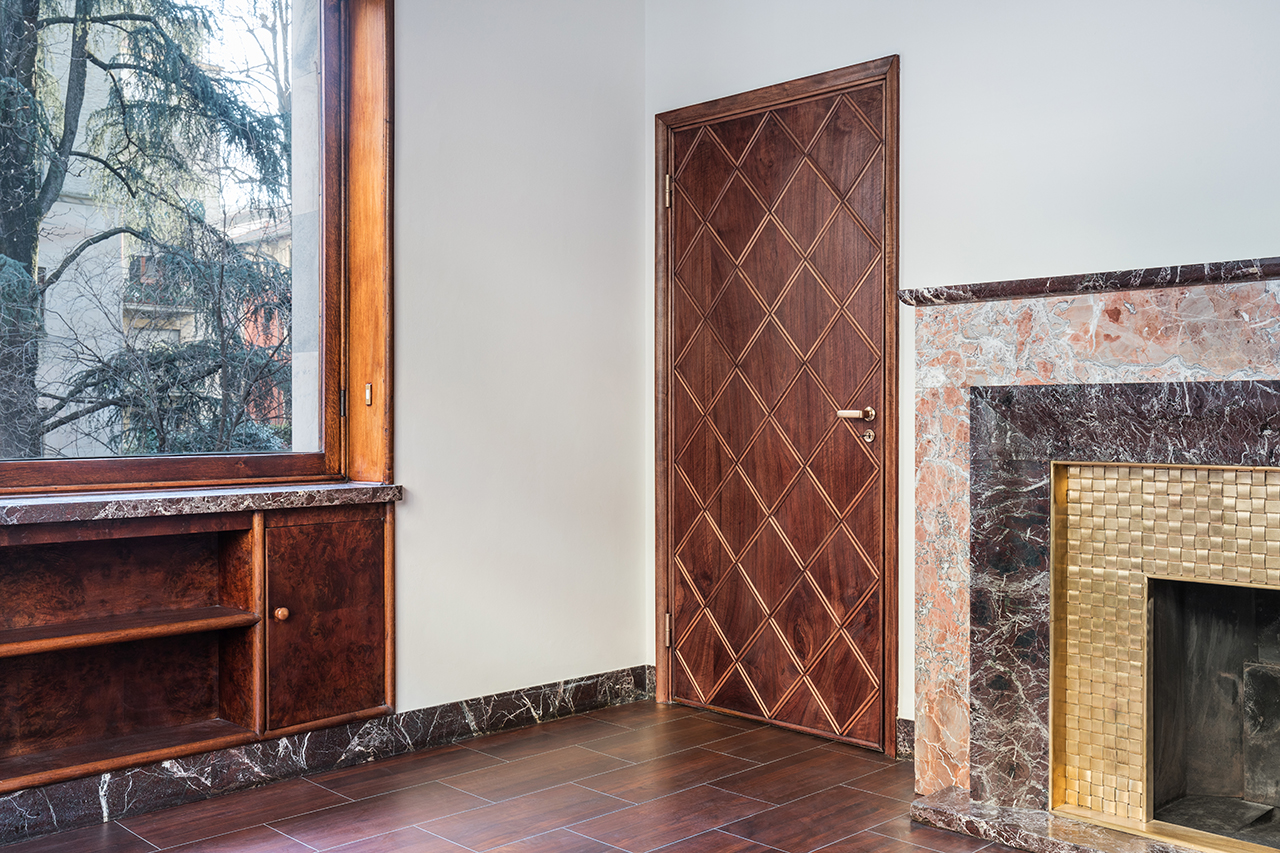
Likely to be a major draw at this year’s Salone del Mobile is art dealer Massimo De Carlo’s eponymous new gallery and Milan headquarters. It’s his third gallery space to open in the city and yet 5000 people flocked through the doors on the opening weekend. They came not just for the inaugural exhibition, MCMXXXIV curated by De Carlo and Francesco Bonami and billed as a ‘parallel vision of history, fusing elements of historicism with modernity’, but for the space itself – which architecturally achieves the same thing.
The new eight-room gallery is housed in Casa Corbellini-Wassermann, a 1930s Piero Portaluppi gem with opulent marble interiors. It was built during the same period as his famous Milanese landmark Villa Necchi Campiglio, but unlike its much-visited grander sibling, this Portaluppi creation lay empty for 15 years before De Carlo snapped it up.
Constructed between 1934-36 for the pharmaceutical entrepreneur Mr Wassermann, the property was designed as an apartment block, incorporating the middle-class owner’s two-storey family residence with rental condominiums above. Wassermann died before completion, passing it to his daughter who married Mr Corbellini, a prominent engineer. It stayed in the family until the 1990s, then became the offices of a bank, only to be abandoned in 2001.
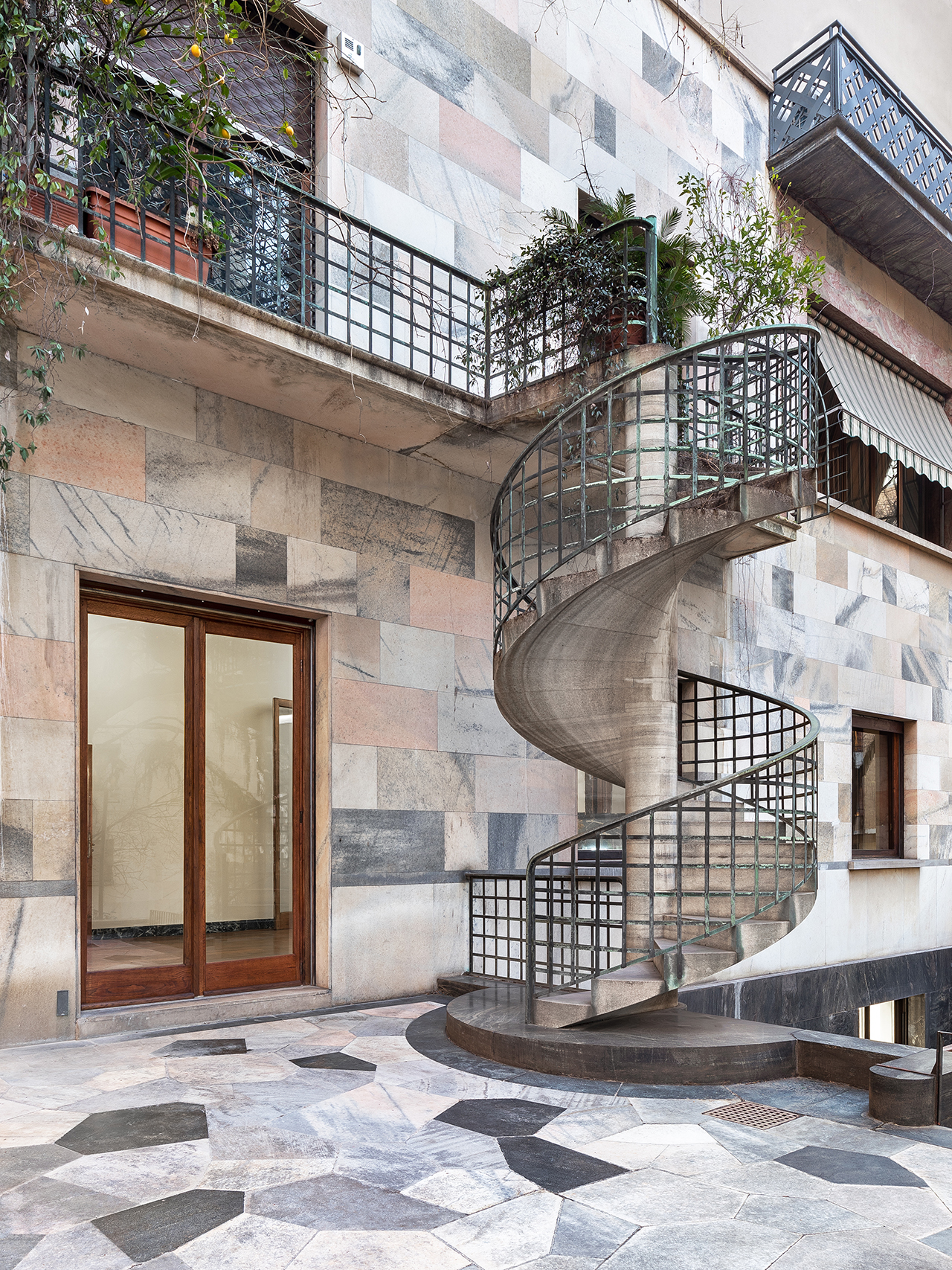
‘This is the first time the public have been able to enter this historical apartment, hence the interest,’ explains Lorenzo Bini, of Milan-based Studio Binocle who led the three-year restoration project with architect Antonio Citterio acting as a fellow consultant.
‘Portaluppi was one of these architectural figures who sat between the classical and the modern,’ says Bini. ‘If you think that Villa Savoye was 1929, this building is not strictly modern, but judging by the large windows of the first and second floor, it was definitely consciously moving towards modernism.’
The main challenge was, ‘adapting the space to create the infrastructure required for a contemporary art gallery in a listed historical building,’ says Bini, who is particularly pleased with the gallery’s minimal lighting system of ‘glowing beams’ custom-designed with Metis Lighting.
Studio Binocle worked with the city authorities to ensure the renovation didn’t compromise the original character of the property, which as the facade suggests is flamboyantly Portaluppi. The first two ‘piano noble’ storeys are clad in a distinctive patchwork of pink and grey Ornavasso marble, signalling the owner’s private residence, as opposed to the upper rental floors that are simply rendered. The 600 sq m upper level now accommodates the gallery, while the 400 sq m basement contains the systems required to service it, plus a library, kitchen and offices.
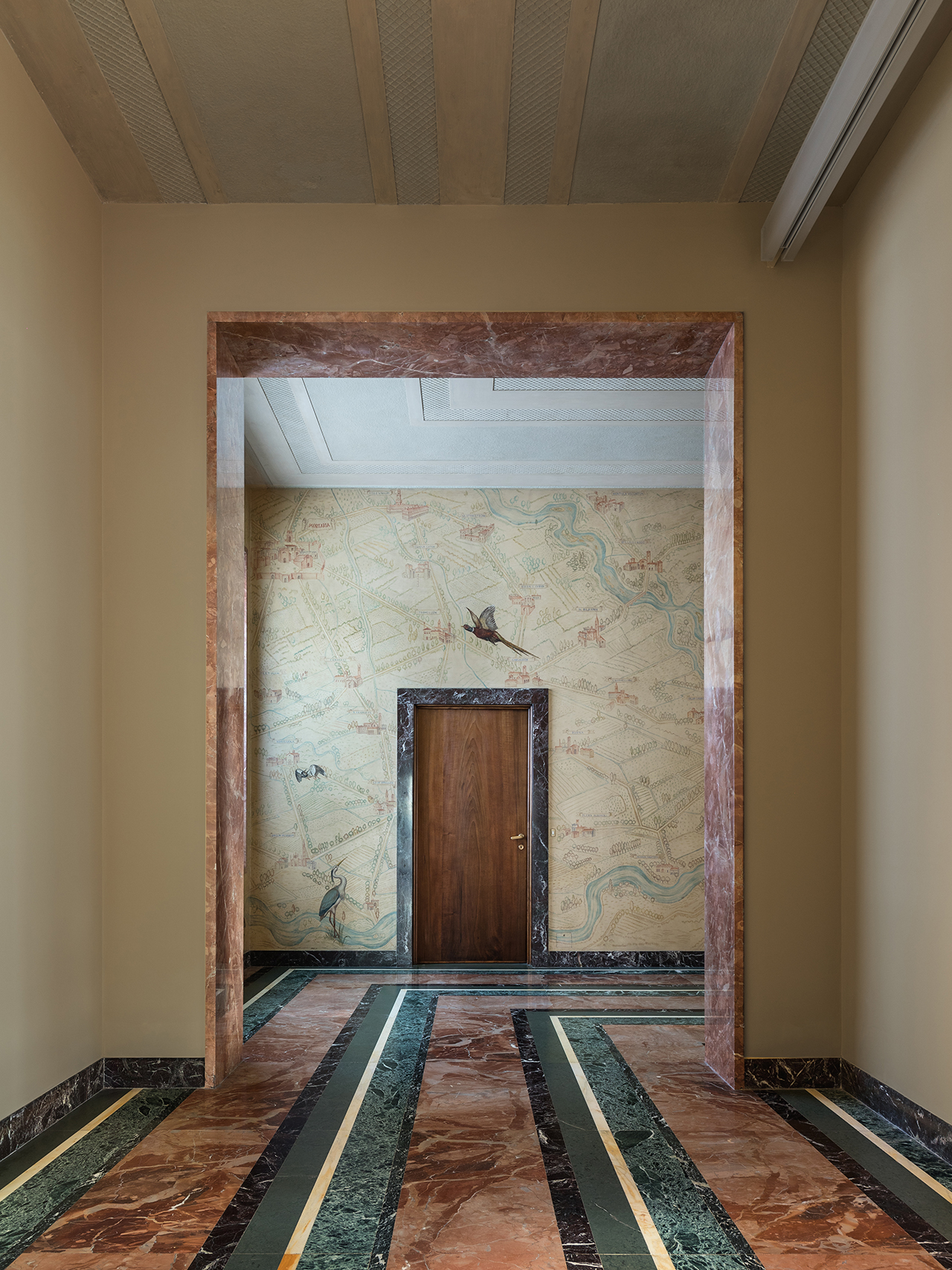
Blessed with generous proportions, the major spaces of the apartment, such as dining salon, lounge, and master bedroom translated well into exhibition spaces. However, Binocle also managed to transform smaller incidental areas by subtly disrupting the ‘strict, rational and modern’ spatial organisation of the apartment.
‘The large hallway with the striped marble floor is a special device that divided the noble part of the house from the servants’ quarters, kitchen and English tutor’s room at the rear,’ explains Bini. By creating an opening in this hallway connecting these areas, exhibition space was increased, while also revealing the architectural narrative of the property. The room with an unrestored blue glass mosaic floor demonstrates the simplicity of the service areas as opposed to the family’s more ornate living spaces.
Rich in ornamentation, the interior is a refreshing alternative to the typical white cube, and follows in the footsteps of De Carlo’s Belgioioso gallery, which is housed in a neoclassical palazzo. Studio Binocle took care to clean and repair the original tempera painting in the hallway, and although other walls are not true to the earthier originals (they opted to extend the ivory of the ceilings), Portaluppi’s extravagant use of mixed marble has been left spectacularly intact.
Most incredible are the owner’s former bathrooms; Mrs Wassermann’s in pink Ornavasso marble and Mr Corbellini’s in an extraordinary turquoise Verde Challant (or Malachite di Challant) marble from a now defunct quarry in Valle d'Aosta – this same marble also lines the entrance of the Fondazione Piero Portaluppi.
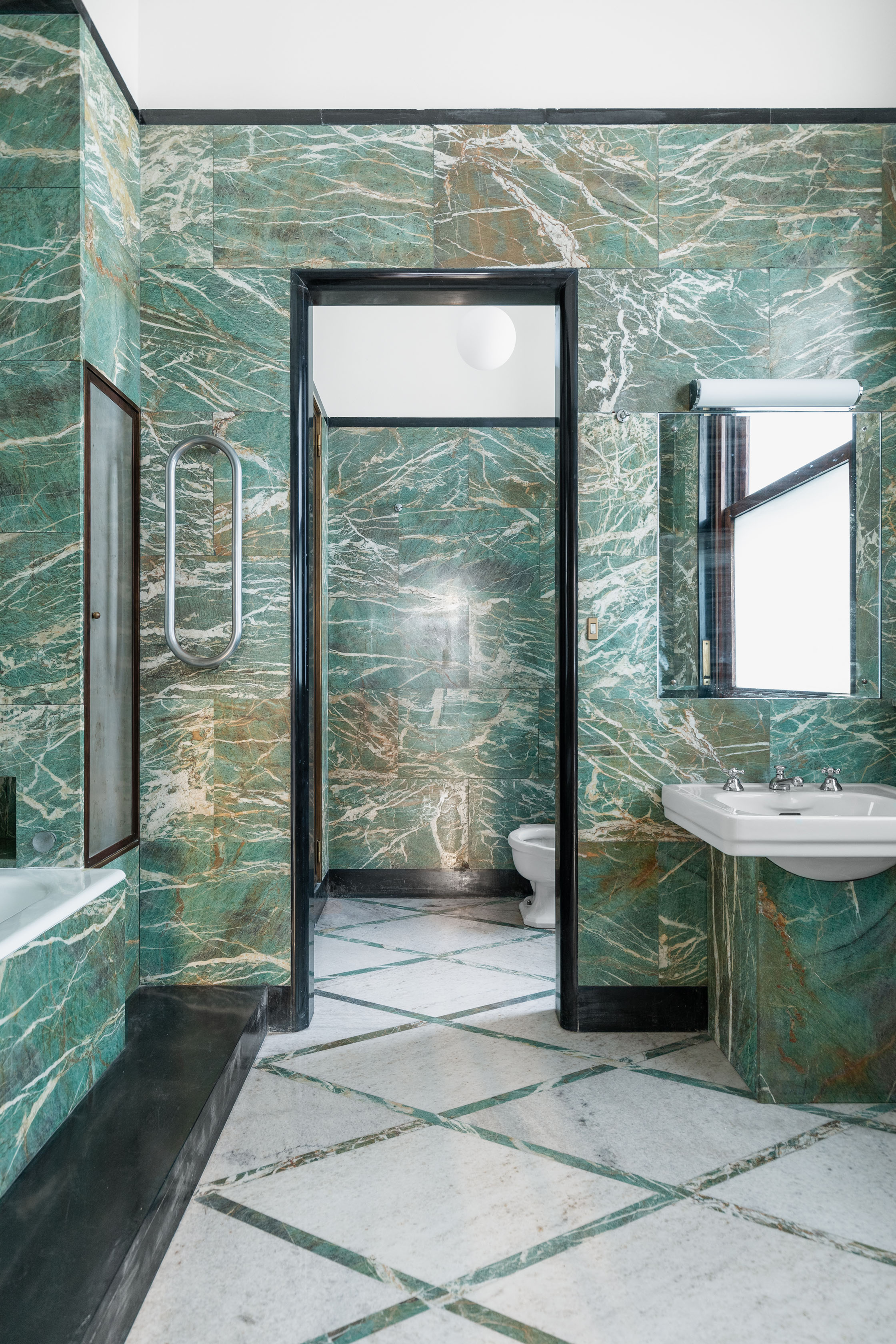
The piece de resistance is the external spiral staircase. ‘It’s one of the most iconic elements of the entire house,’ says Bini of the winding concrete and marble structure that was designed by Portaluppi with BBPR for the ‘Casa del sabato per gli sposi’ (which loosely translates as ‘the wedding chamber’) pavilion for the 1933 Milan Triennale. ‘It was created without a balustrade in a glass cylinder and was extremely modern. Portaluppi reinvented it here to allow the family on the first floor direct access to the garden below.’ Studio Binocle mirrored this feature inside the gallery, by replacing an internal staircase from the 1980s with a spiral version of similar proportions. Clad in green linoleum rather than marble, it provides staff access between the gallery and offices below.
It seems a tragedy that this interior lay hidden from public view for so long, but Bini believes it probably saved it. ‘If Casa Corbellini-Wassermann had fallen into the wrong hands it could have been lost forever,’ he says. ‘It was only finally listed in 2004 as people started to recognise the worth of modern architecture and our recent heritage.’

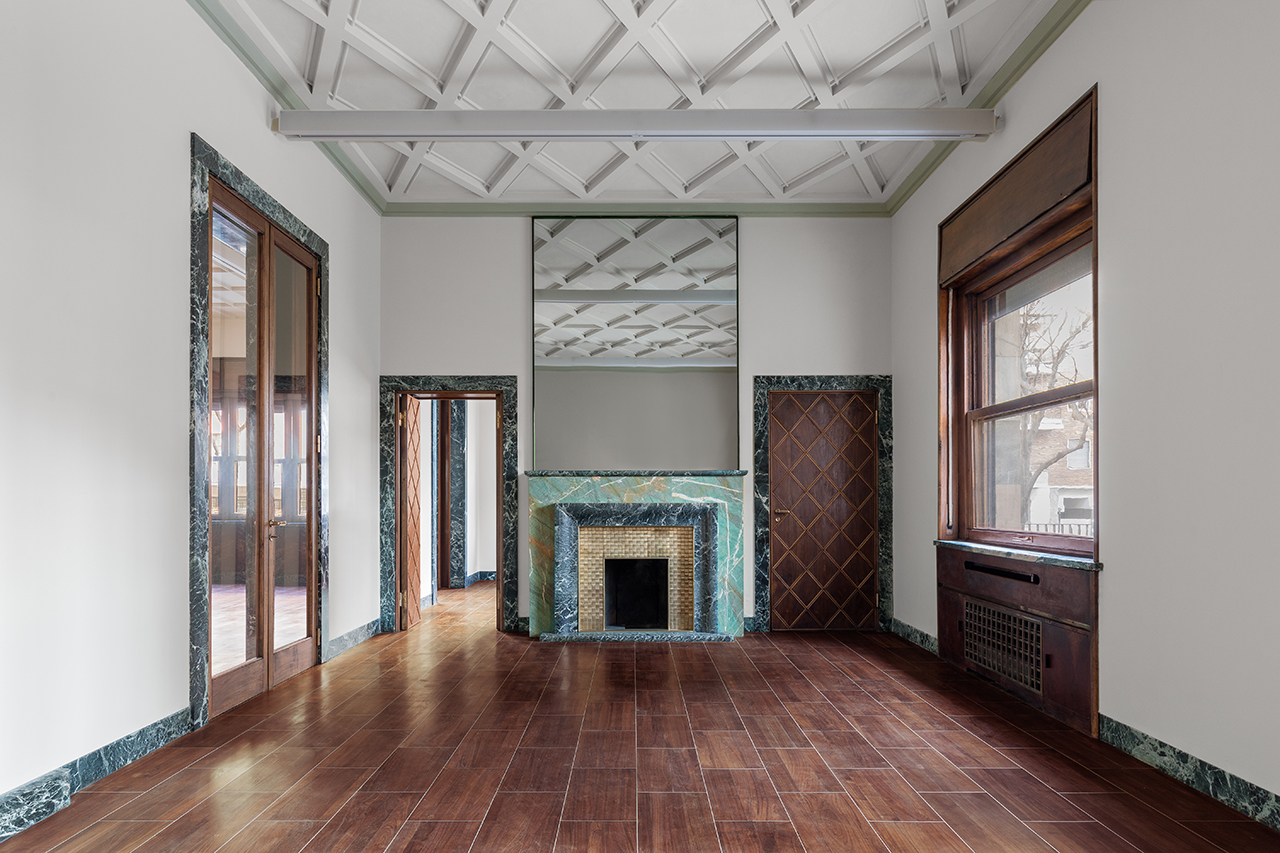
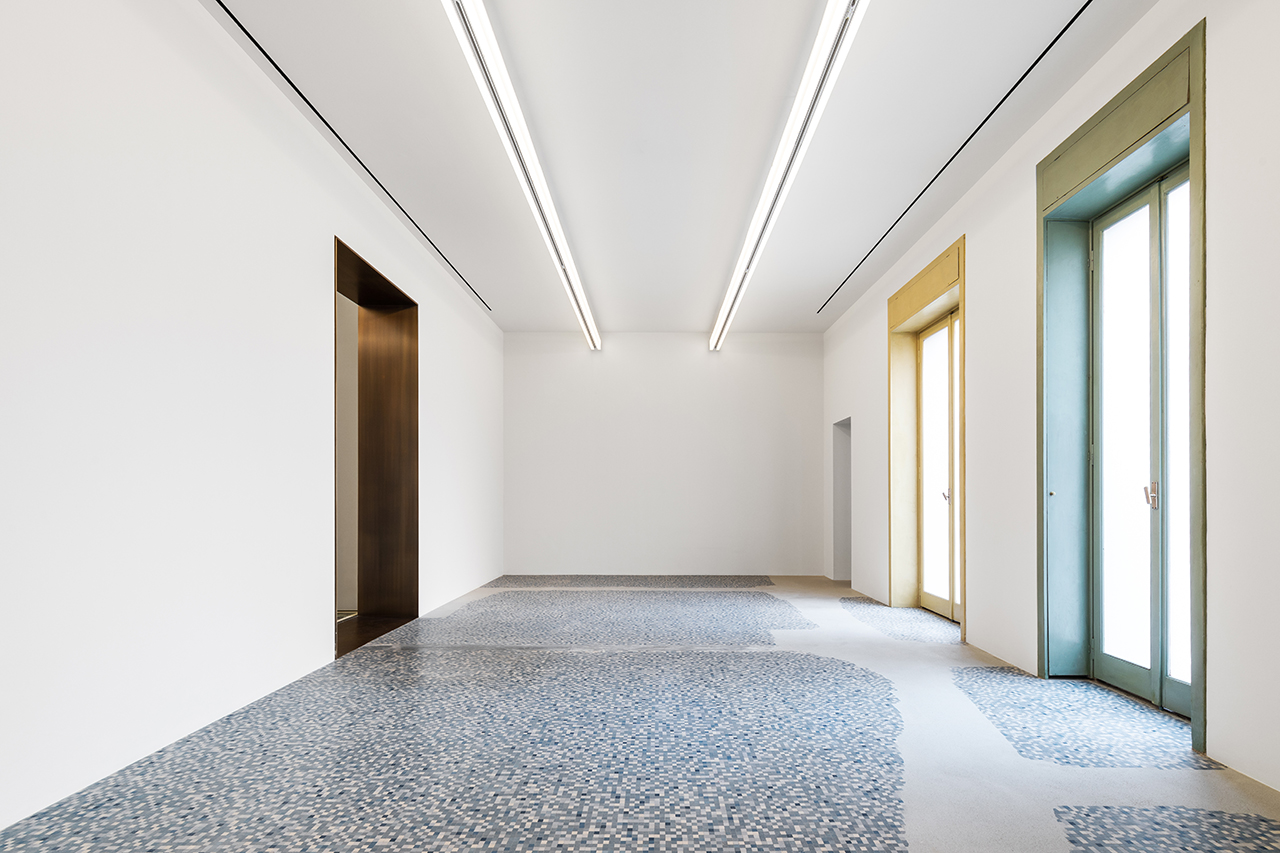
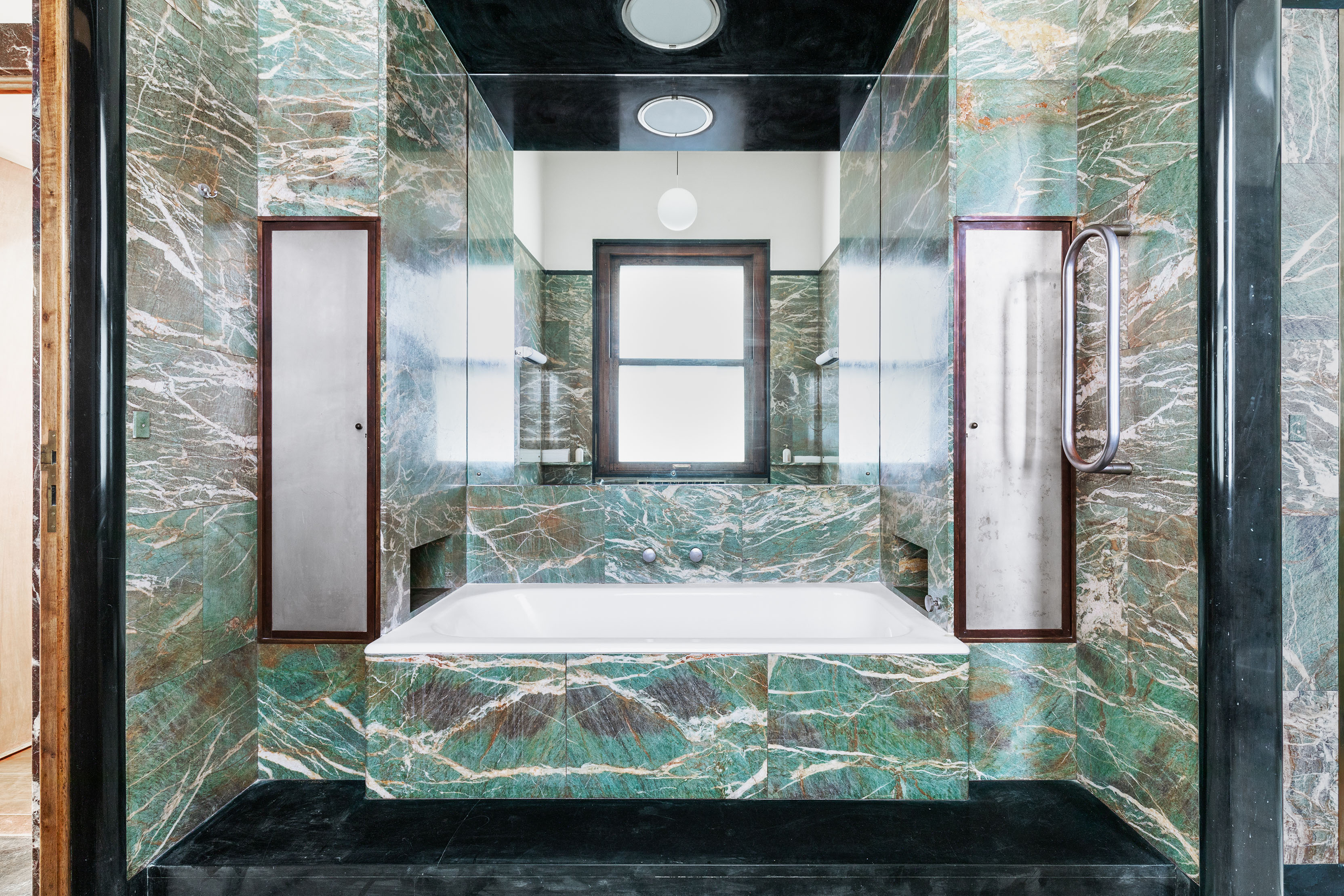
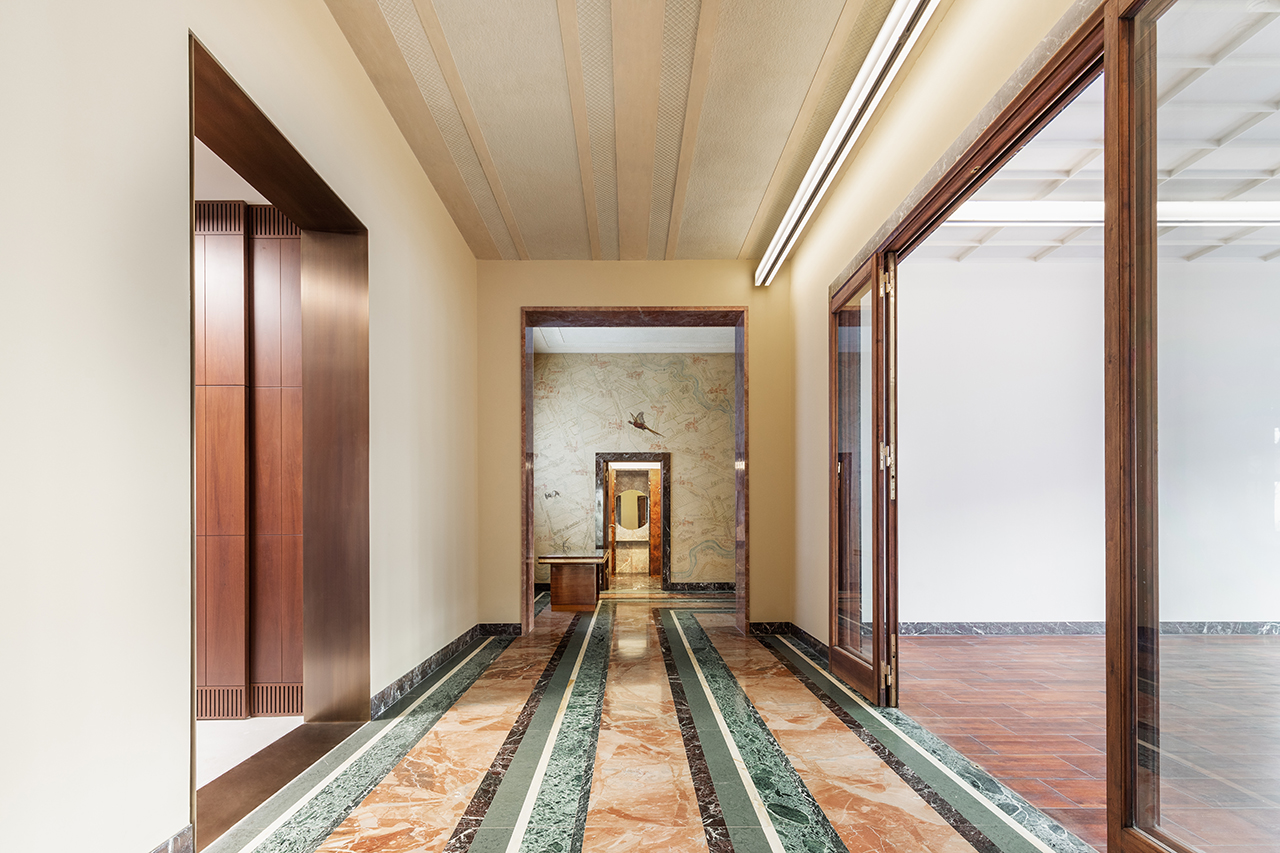
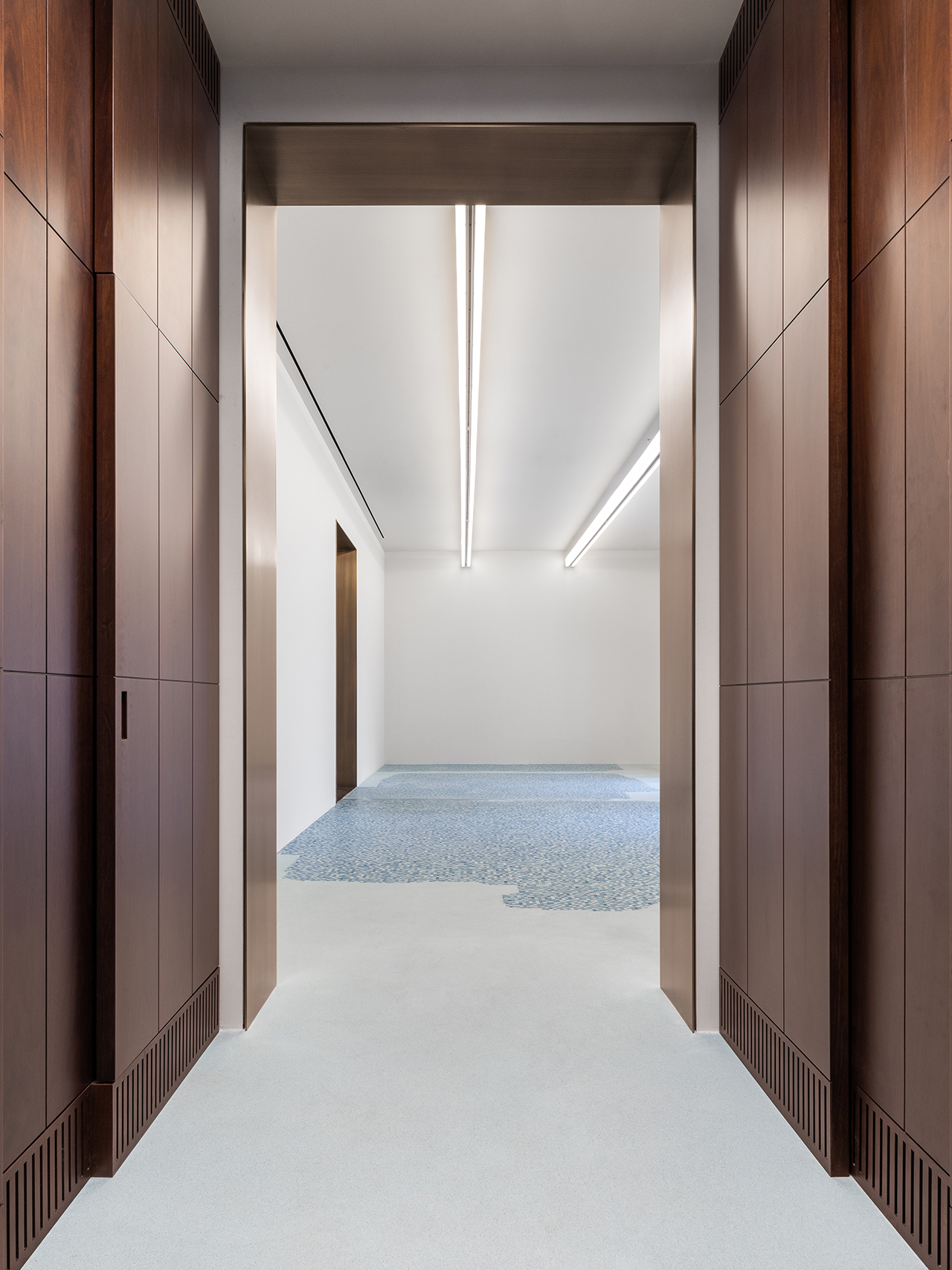


INFORMATION
‘MCMXXXIV’ is on view until 13 July. For more information, visit the Studio Binocle website, the Massimo de Carlo website
ADDRESS
Receive our daily digest of inspiration, escapism and design stories from around the world direct to your inbox.
Massimo De Carlo, Milano
Casa Corbellini-Wassermann
Viale Lombardia, 17
20131
Milan
-
 Martell’s high-tech new cognac bottle design takes cues from Swiss watch-making and high-end electronics
Martell’s high-tech new cognac bottle design takes cues from Swiss watch-making and high-end electronicsUnconventional inspirations for a heritage cognac, perhaps, but Martell is looking to the future with its sharp-edged, feather-light, crystal-clear new design
-
 In 2025, fashion retail had a renaissance. Here’s our favourite store designs of the year
In 2025, fashion retail had a renaissance. Here’s our favourite store designs of the year2025 was the year that fashion stores ceased to be just about fashion. Through a series of meticulously designed – and innovative – boutiques, brands invited customers to immerse themselves in their aesthetic worlds. Here are some of the best
-
 The Wallpaper* team’s travel highlights of the year
The Wallpaper* team’s travel highlights of the yearA year of travel distilled. Discover the destinations that inspired our editors on and off assignment
-
 Modernist Palazzo Mondadori’s workspace gets a playful Carlo Ratti refresh
Modernist Palazzo Mondadori’s workspace gets a playful Carlo Ratti refreshArchitect Carlo Ratti reimagines the offices in Palazzo Mondadori, the seminal work by Brazilian master Oscar Niemeyer in Milan
-
 Wang Shu and Lu Wenyu to curate the 2027 Venice Architecture Biennale
Wang Shu and Lu Wenyu to curate the 2027 Venice Architecture BiennaleChinese architects Wang Shu and Lu Wenyu have been revealed as the curators of the 2027 Venice Architecture Biennale
-
 At the Holcim Foundation Forum and its Grand Prizes, sustainability is both urgent and hopeful
At the Holcim Foundation Forum and its Grand Prizes, sustainability is both urgent and hopefulThe Holcim Foundation Forum just took place in Venice, culminating in the announcement of the organisation's Grand Prizes, the projects especially honoured among 20 previously announced winning designs
-
 Carlo Ratti reflects on his bold Venice Architecture Biennale as it closes this weekend
Carlo Ratti reflects on his bold Venice Architecture Biennale as it closes this weekendThe Venice Architecture Biennale opens with excitement and fanfare every two years; as the 2025 edition draws to a close, we take stock with its curator Carlo Ratti and ask him, what next?
-
 Step inside Casa Moncler, the brand’s sustainable and highly creative Milanese HQ
Step inside Casa Moncler, the brand’s sustainable and highly creative Milanese HQCasa Moncler opens its doors in a masterfully reimagined Milanese industrial site, blending modern minimalism and heritage, courtesy of ACPV Architects Antonio Citterio Patricia Viel
-
 Aldo Frattini Bivouac is a mountain shelter, but not as you know it
Aldo Frattini Bivouac is a mountain shelter, but not as you know itA new mountain shelter on the northern Italian pre-Alp region of Val Seriana, Aldo Frattini Bivouac is an experimental and aesthetically rich, compact piece of architecture
-
 The 2026 Winter Olympics Village is complete. Take a look inside
The 2026 Winter Olympics Village is complete. Take a look insideAhead of the 2026 Winter Olympics, taking place in Milan in February, the new Olympic Village Plaza is set to be a bustling community hub, designed by Skidmore, Owings & Merrill
-
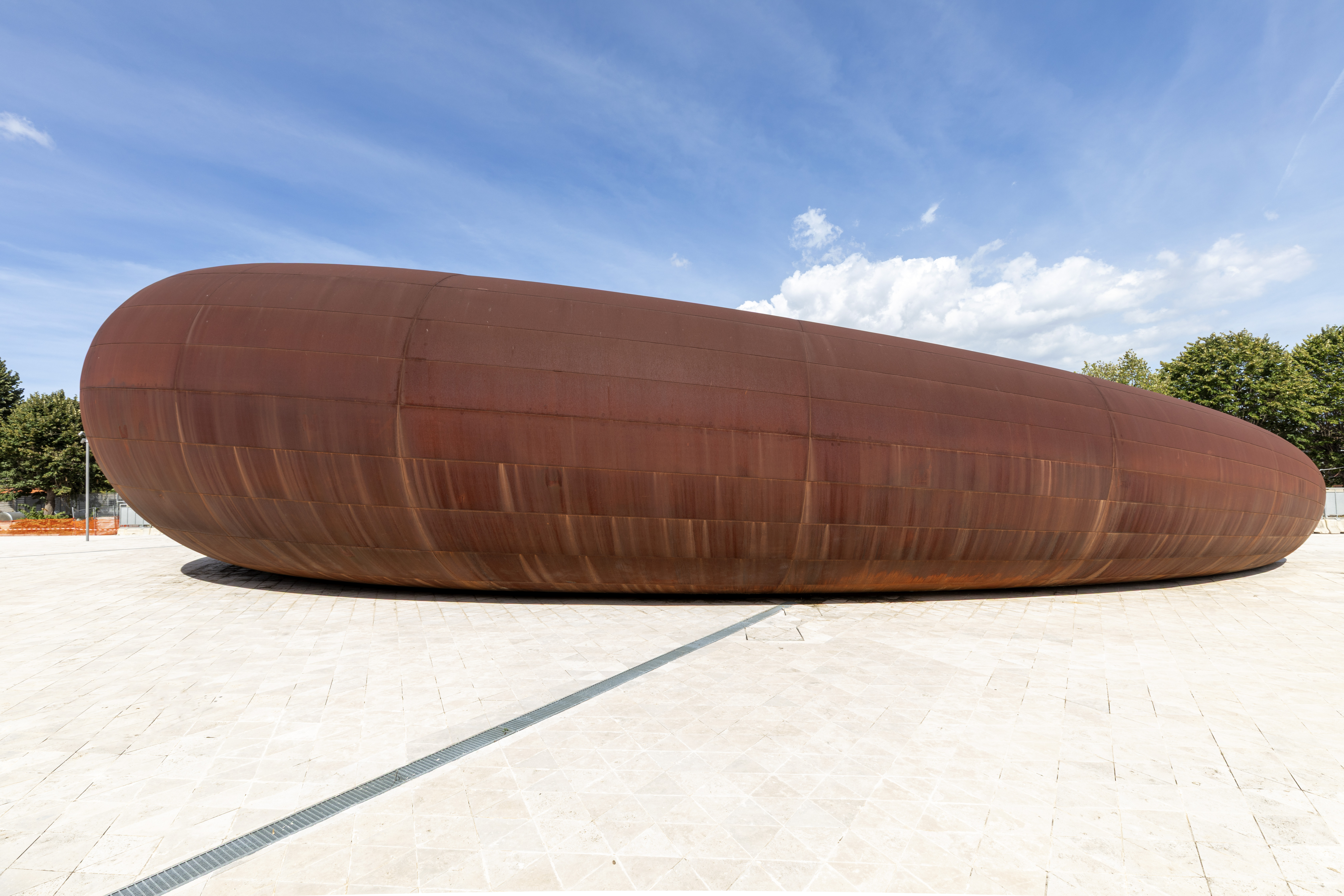 Anish Kapoor designs Naples station as a reflection of ‘what it really means to go underground’
Anish Kapoor designs Naples station as a reflection of ‘what it really means to go underground’A new Naples station by artist Anish Kapoor blends art and architecture, while creating an important piece of infrastructure for the southern Italian city